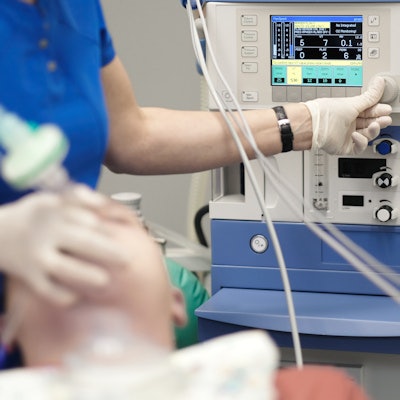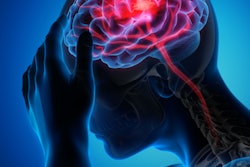
Artificial intelligence (AI) can improve accuracy by up to 15% for novice ultrasound users when it comes to guiding regional anesthesia, according to a study published on 8 September in the British Journal of Anaesthesia.
Researchers led by Dr. James Bowness from the University of Oxford found that AI helped practitioners identify more correct block views and sono-anatomical structures while also not significantly impacting scan times.
"Such technology holds potential to augment performance of ultrasound scanning for regional anesthesia by non-experts, potentially expanding patient access to these techniques," Bowness et al wrote.
Users of ultrasound-guided regional anesthesia must be able to visualize key landmark, target, and safety structures on ultrasound. This can be challenging for novice users since the anatomy of target areas can be varied and complex in nature.
AI's potential for medical imaging has been studied to the point of becoming mainstream, including for ultrasound. This includes ultrasound-guided regional anesthesia. Along with aiding in identifying and interpreting structures on images, AI has also been explored for educational purposes in medical imaging.
The researchers, however, noted a lack of data comparing scanning performance for ultrasound-guided regional anesthesia with and without AI.
Bowness and colleagues wanted to prospectively assess the impact of their preferred AI software (ScanNav, Intelligent Ultrasound) on improvement in acquiring correct block views when performing ultrasound scans for a peripheral nerve block. They also wanted to see whether AI could help novice users correctly identify anatomical structures on ultrasound, as well as improve confidence, expert global assessment of novice users' scan performance, and scan times.
The researchers looked at data from 21 novice anesthetists who assessed a total of 126 ultrasound scans from five healthy volunteers. The anesthetists went through a standard teaching session in ultrasound scanning for six peripheral nerve blocks. Afterward, they performed a scan for each block, with half being performed with AI assistance and half without.
| Anesthetist performance on ultrasound-guided regional anesthesia with and without AI | |||
| Without AI assistance | With AI assistance | p-value | |
| Correct block view | 75.1% | 90.3% | 0.031 |
| Correctly identifying anatomical structures | 77.4% | 88.8% | 0.002 |
The researchers, however, found no statistically significant differences in user confidence, expert global performance score, or scan time. The average scan time was about 75 seconds.
The study authors wrote that the comparable scan times between the two groups shows that AI does not impede a scanner's workflow, which could help with user acceptance. They also added that improved user confidence could make way for more use by novice users in ultrasound-guided regional anesthesia and that expert users could be more readily able to supervise such procedures or let more novice users scan on their own.
"To support this widespread learning and practice, innovation in training and technology is required," Bowness and co-authors wrote. "These data provide initial evidence that AI technology might be useful for this purpose."
The team called for larger studies exploring AI's impact on longer-term retention of competence, as well as determining which clinician group would benefit the most. The group also suggested that point-of-care ultrasound (POCUS) can help implement ultrasound-guided regional anesthesia in nonanesthetic specialties like emergency medicine.
"Clinicians in these areas, often familiar with POCUS and interventional procedures but less so with ultrasound-guided regional anesthesia, could benefit from such technology to support their learning and practice," the researchers wrote.
Disclosure notice: This study was funded in part by a research grant from Intelligent Ultrasound.



















